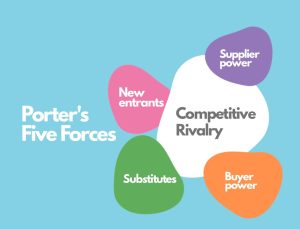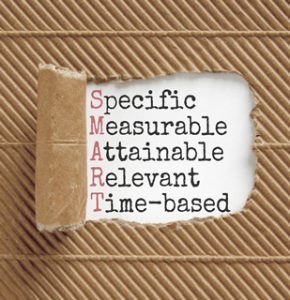
Charting Success: A Comprehensive Guide to Developing and Implementing Strategic Business Roadmaps
In the complex world of business, executive leaders often grapple with steering their organizations towards a prosperous future. Understanding the current situation, setting clear goals, and developing a strategic roadmap are critical steps in this journey. This comprehensive guide provides a deep dive into these processes, shedding light on the significance of roadmaps, methods to assess your organization’s position, setting SMART goals, creating and implementing roadmaps, and the continuous monitoring and updating of these strategic plans. By the end of this guide, leaders will be equipped with a holistic understanding and actionable insights to navigate their organization’s path to success.
Understanding the Need for a Business Roadmap for Executive Leaders
As an executive leader, one of your critical roles involves steering your organization towards its future vision and objectives. This journey is best navigated with a roadmap in hand – a business roadmap. A well-crafted roadmap can serve as a compass, offering direction and defining the path for every member of your organization.
Defining a Business Roadmap
At its core, a business roadmap is a strategic tool that visually communicates the key objectives and initiatives necessary for an organization’s journey from its current state to its desired future state. Unlike a tactical plan that focuses on specific tasks, a business roadmap focuses on high-level objectives and strategies, and it often spans several years.
Imagine it as a bridge that connects your present scenario to your envisioned future. A comprehensive roadmap would consider all aspects of the business, including product development, market trends, customer demands, technological advancements, financial projections, and much more.
The Significance of a Business Roadmap
A roadmap is not a luxury; it’s a necessity for any organization that aspires to thrive and not just survive. Here’s why:
-
-
- Aligns the Organization: A roadmap ensures that all stakeholders – from the boardroom to the break room – understand and align with the strategic objectives. It synchronizes various departments and individuals towards a unified goal.
- Facilitates Decision-Making: By offering a clear vision of the future, a roadmap aids leaders in making strategic decisions. When faced with various options, it provides a reference point to evaluate which choices align best with the organization’s strategic direction.
- Mitigates Risk: A roadmap aids in foreseeing potential roadblocks and challenges, thereby allowing organizations to proactively address them. It provides a mechanism to plan for contingencies, making the organization more resilient.
- Enables Tracking and Evaluation: A roadmap is not a static document. It allows for constant monitoring and adjustment, ensuring that the organization stays on course. It serves as a benchmark to measure progress and determine if strategic shifts are needed.
-
Lessons from the Real World
The importance of a roadmap becomes more tangible when you consider real-life examples:
-
 Apple Inc. stands as a testament to the power of a clear roadmap. Apple’s consistent focus on customer-centric innovation and high-quality products has been key in its transformation from a struggling company in the mid-1990s to one of the world’s most valuable corporations today. This wouldn’t have been possible without a strategic roadmap driving their vision forward.
Apple Inc. stands as a testament to the power of a clear roadmap. Apple’s consistent focus on customer-centric innovation and high-quality products has been key in its transformation from a struggling company in the mid-1990s to one of the world’s most valuable corporations today. This wouldn’t have been possible without a strategic roadmap driving their vision forward.
 On the other hand, Kodak’s downfall is a classic example of the perils of lacking a clear roadmap. Despite having early insights into the digital photography revolution, Kodak failed to adapt its business model and roadmap to this new trend. Consequently, the company that once dominated the photography industry filed for bankruptcy in 2012.
On the other hand, Kodak’s downfall is a classic example of the perils of lacking a clear roadmap. Despite having early insights into the digital photography revolution, Kodak failed to adapt its business model and roadmap to this new trend. Consequently, the company that once dominated the photography industry filed for bankruptcy in 2012.
Additional considerations for creating your organization’s business roadmap
When creating your business roadmap, it’s important to consider the following:
- Stakeholder Inclusion: Ensure input from various stakeholders within the organization. This increases buy-in and makes the roadmap more comprehensive and realistic.
- Flexibility: Remember, a roadmap is a guide, not a strict rulebook. It should have the flexibility to adjust to new information, market shifts, or organizational changes.
Understanding Your Organization’s Current Position
To effectively chart a path toward the future, it’s critical for executive leaders to first comprehend their organization’s present situation. This involves a comprehensive evaluation of the current position and the environment within which your organization operates. It may sound daunting, but with the right tools and methods, you can develop a thorough understanding that serves as a solid foundation for your strategic planning.
The Cornerstone: Situation Analysis
A situation analysis is the process of gathering and interpreting data about an organization’s internal and external environment to understand its current position. This detailed analysis will help leaders to make strategic decisions based on the organization’s reality, not assumptions.
SWOT Analysis: Internal Strengths and Weaknesses, External Opportunities, and Threats
The SWOT analysis is a popular and powerful tool for situational analysis. It provides a straightforward way to scrutinize both internal and external factors.
-
- Strengths and Weaknesses involve an internal review of your organization’s capabilities. Assess factors such as human resources, financial resources, physical resources, and business processes.
-
- Opportunities and Threats require you to look outside your organization. Understand the market trends, competitor actions, changes in technology, shifts in consumer behavior, and regulatory changes.
 Porter’s Five Forces: Understanding the Competitive Environment
Porter’s Five Forces: Understanding the Competitive Environment
Porter’s Five Forces is a model designed to analyze an organization’s competitive environment. It focuses on five key forces:
-
- Competition in the Industry: The intensity of competition and the number of competitors.
- Potential of New Entrants into the Industry: The ease or difficulty for new competitors to enter the market.
- Power of Suppliers: The strength and influence of suppliers.
- Power of Customers: The strength and influence of customers.
- Threat of Substitute Products: The potential for your customers to switch to alternatives.
By understanding these forces, you can gauge your organization’s competitive position and identify areas where you can create a competitive advantage.
The 5 C’s Analysis: A Wider Lens
To further broaden your understanding, you can employ the 5 C’s analysis. It examines:
-
- Company: Assess your organization’s products, services, and capabilities.
- Customers: Understand your target audience, their needs, and behaviors.
- Competitors: Evaluate your competitors’ strengths, weaknesses, strategies, and market positions.
- Climate (or Context): Analyze the macro-environment factors like political, economic, social, technological, legal, and environmental changes (often referred to as PESTLE analysis).
- Collaborators: Identify potential partners, suppliers, or other stakeholders who can contribute to your organization’s success.
Tools for Situation Analysis
To carry out these analyses, leaders can use a variety of tools such as market research data, customer surveys, industry reports, competitive intelligence tools, financial analysis tools, and even social listening tools to capture consumer sentiment.
Furthermore, workshops or brainstorming sessions can be effective ways to collect insights from various departments and perspectives within your organization. They not only contribute to a more comprehensive analysis but also promote buy-in from the team.
The Ongoing Iterations of your Situational Analysis
It’s important to remember that understanding your organization’s current position is not a one-time activity. The business world is dynamic, so regular reviews and updates should be incorporated into your strategic planning process.
To sum up, comprehending your organization’s current position is a critical first step in the strategic planning process. It enables you to ground your strategies in reality, and equips you to make more informed, effective decisions to steer your organization toward a successful future.
Setting Clear Goals for the Future: A Key to Success
Once you have understood your organization’s current position, the next step is to map out your future – and this begins with setting clear, strategic goals. Goals are not just aspirations or wishes; they are the strategic pillars that guide all activities within your organization and provide a yardstick against which progress can be measured.
The Importance of Goal Setting in Roadmap Development
Goal setting plays an indispensable role in roadmap development. Goals serve as the destination points on your roadmap, guiding your organization’s journey towards its envisioned future. They provide clarity and direction, ensuring that every step taken is purposeful and contributes to the larger objectives. Without well-defined goals, your roadmap risks becoming a wandering path that leads nowhere.
 The Power of SMART Goals
The Power of SMART Goals
When setting goals, the SMART framework is an invaluable tool. It stands for:
-
- Specific: Goals should be clear and concise, leaving no ambiguity about what you aim to achieve.
- Measurable: Each goal should have tangible criteria to track progress and determine when the goal is achieved.
- Achievable: Goals should be challenging yet attainable within your resources and capabilities.
- Relevant: Each goal should align with your broader business objectives and contribute to your organization’s mission.
- Time-bound: Goals should have a clearly defined timeline for completion to create a sense of urgency and focus.
For example, instead of saying, “We want to increase revenue,” a SMART goal would be, “We aim to increase revenue by 15% over the next 12 months by expanding our product line and entering two new markets.”
Aligning Goals with the Organization’s Mission and Vision
To ensure strategic coherence, it’s crucial that the goals align with your organization’s mission (what your organization seeks to achieve) and vision (where your organization aspires to be in the future). This alignment ensures that every goal, however specific or short-term, contributes to the long-term success and sustainability of your organization.
Consider the mission and vision as the guiding stars, while your goals are the routes you chart towards them. By linking each goal back to the mission and vision, you foster a sense of purpose and direction throughout the organization, improving team morale and commitment.
Additional Considerations: Involve and Communicate
When setting goals, remember to involve different levels and departments of your organization. This not only ensures diverse perspectives but also promotes buy-in and commitment from your team.
Once the goals are set, communicate them effectively throughout your organization. Everyone should understand what the goals are, why they are important, and how they contribute to them.
Developing a Roadmap for Your Organization as an Executive Leader
As an executive leader, setting a strategic direction for your organization is one of your primary responsibilities. A well-thought-out roadmap helps fulfill this responsibility, serving as a visual guide that depicts how the organization will move from its current state to its desired future state. In this guide, we will explore how to create an effective roadmap that is centered around the goals of your organization and involves all relevant stakeholders.
 Understanding the Roadmap Creation Process
Understanding the Roadmap Creation Process
Developing a roadmap is not an overnight task; it is a meticulous process that involves multiple stages, each serving a distinct purpose in the creation of this strategic document.
-
- Understand the Current State: The first step involves assessing where your organization stands. This includes understanding the internal strengths and weaknesses, as well as external opportunities and threats, often carried out through SWOT analysis.
- Define the Desired Future State: After understanding the current state, articulate where you want your organization to be in the future. This should be aligned with the organization’s mission and vision.
- Set Clear Goals: These are the milestones that your organization needs to achieve in order to move from its current state to its future state. Ensure these goals are SMART (Specific, Measurable, Achievable, Relevant, and Time-bound).
- Identify Key Initiatives: These are the strategies and actions that will enable you to achieve each goal. They serve as the stepping stones on the path towards your objectives.
- Sequence Initiatives and Allocate Resources: Organize these initiatives based on their priority and interdependencies, and assign appropriate resources to each.
- Review and Refine: Finally, the roadmap should be regularly reviewed and refined to ensure it remains relevant and effective as conditions change.
Involvement of Different Stakeholders
For a roadmap to be successful, it’s essential to involve different stakeholders in its creation. Stakeholders can provide diverse perspectives, insights, and expertise that can enrich the roadmap. Furthermore, their involvement promotes buy-in and commitment, crucial for the successful implementation of the roadmap.
Key stakeholders may include:
-
- Leadership Team: They provide strategic direction and make critical decisions regarding goals, resources, and timelines.
- Department Heads: They offer insights into departmental capabilities, needs, and interdependencies.
- Employees: They can provide valuable on-the-ground insights and will be responsible for implementing much of the roadmap.
- External Stakeholders: These may include customers, suppliers, or industry experts who can offer external perspectives.
A Step-by-Step Guide to Creating an Effective Roadmap
-
- Gather Inputs: Begin by gathering data about your organization’s current state, desired future state, and potential barriers and opportunities. Use tools like SWOT analysis, customer feedback, market research, and financial analysis.
- Engage Stakeholders: Conduct workshops or meetings to engage stakeholders in defining the future state, setting goals, and brainstorming key initiatives.
- Draft the Roadmap: Based on these inputs, draft a roadmap outlining the goals, key initiatives, timelines, and resource allocation. Use a visual format that is easy to understand and communicate.
- Review and Refine: Present the draft roadmap to stakeholders for feedback. Refine it based on this feedback to ensure it is realistic and has broad support.
- Communicate the Roadmap: Once finalized, communicate the roadmap to the entire organization. Ensure everyone understands it and their role in implementing it.
- Implement, Monitor, and Adjust: Begin implementing the roadmap. Regularly monitor progress against the goals and adjust the roadmap as needed.
Developing a roadmap is a strategic and inclusive process that provides a clear path for your organization’s future.
Implementing a Roadmap for Your Organization as an Executive Leader
Developing a strategic roadmap is only half the battle; implementing it is where the real challenge lies. As an executive leader, it’s your responsibility to translate the roadmap into actionable steps, engage all members of the organization in the implementation, and navigate through any potential obstacles.
Translating the Roadmap into Actionable Steps
 The first step in implementing your roadmap is breaking down the key initiatives into detailed action plans. Each initiative should be further divided into specific tasks, each with assigned responsibility, timelines, and required resources. This process turns the high-level strategy into concrete actions that individuals and teams can execute.
The first step in implementing your roadmap is breaking down the key initiatives into detailed action plans. Each initiative should be further divided into specific tasks, each with assigned responsibility, timelines, and required resources. This process turns the high-level strategy into concrete actions that individuals and teams can execute.
For instance, if a goal on your roadmap is to “increase market share by 10% in the next two years”, a corresponding initiative might be “launch a new product line.” This initiative could be broken down into tasks such as “conduct market research,” “develop product concept,” “prototype product,” and “plan product launch,” with each task assigned to a specific team or individual.
Engaging All Members in the Implementation
Successful implementation of the roadmap requires the involvement and commitment of everyone in the organization. Here’s how you can ensure that:
-
- Communication: Communicate the roadmap and the implementation plans to the entire organization. Make sure everyone understands not just what they need to do, but also why they need to do it, and how it contributes to the overall goals.
- Empowerment: Empower employees with the necessary resources and authority to carry out their tasks. This not only improves efficiency but also promotes a sense of ownership and commitment.
- Alignment: Ensure that individual and team goals are aligned with the roadmap goals. This includes aligning performance metrics and incentives to promote behaviors that contribute to the roadmap objectives.
- Feedback and Recognition: Regularly recognize and reward efforts and achievements towards the roadmap goals. Encourage feedback and suggestions to continually improve the implementation process.
Navigating through Potential Obstacles
Even with a well-crafted roadmap and implementation plan, you will likely encounter obstacles. These might include resistance to change, resource constraints, external changes, or unexpected challenges. Here’s how you can navigate through these:
-
- Resistance to Change: Change can be unsettling. It’s crucial to manage change effectively, involving stakeholders in the process, addressing concerns, and providing necessary support and training.
- Resource Constraints: Resource allocation should be a key part of your implementation planning. However, if constraints arise, you’ll need to prioritize initiatives and tasks based on their impact and urgency.
- External Changes: The external environment can change unpredictably. Regularly review and adjust your roadmap and implementation plan to adapt to changes in market trends, customer behavior, technology, or regulations.
- Unexpected Challenges: Unexpected challenges are inevitable. Cultivate a problem-solving mindset within your organization. Encourage agility, creativity, and resilience to overcome these challenges.
Implementing a roadmap requires thoughtful planning, strong leadership, and active engagement of all members of your organization. As an executive leader, you play a critical role in guiding your organization through this journey, from translating the roadmap into actionable steps to navigating through potential obstacles.
Monitoring and Updating the Roadmap for Your Organization
Creating a roadmap for your organization’s future is a strategic endeavor that requires considerable effort and resources. However, the journey doesn’t end with the development and implementation of this roadmap; it extends into monitoring progress and making necessary adjustments. This is a dynamic process that allows your organization to remain agile and responsive to both internal and external changes.
The Importance of Monitoring and Adjusting the Roadmap
Monitoring your organization’s progress against the roadmap is pivotal in understanding whether your strategy is working. Regular monitoring allows for timely identification of any deviations or setbacks, enabling you to take corrective action before small issues turn into significant problems.
Furthermore, adjusting the roadmap as per the changing circumstances is an essential aspect of strategic planning. No plan is carved in stone, and your roadmap is no exception. Market trends, customer behaviors, technological advances, and many other factors can change rapidly and unpredictably. By regularly reviewing and updating your roadmap, you can keep your strategy relevant and effective.
Key Performance Indicators (KPIs) and Their Role
Key Performance Indicators (KPIs) are quantifiable measures that help track the progress of your roadmap. They are critical in assessing whether your organization is moving towards its defined goals. Each goal in your roadmap should have corresponding KPIs.
For instance, if one of your roadmap goals is to increase customer satisfaction, a corresponding KPI could be the Net Promoter Score (NPS), a widely recognized metric for customer satisfaction. By tracking your NPS over time, you can measure how well you’re achieving this goal.
Selecting the right KPIs is vital. They should be relevant to your goals, easy to understand, and measurable with the data you can realistically collect.
Regular Review Cycles and Roadmap Updates
Conducting regular reviews of your roadmap is a key part of the monitoring process. These reviews should assess progress towards the goals, effectiveness of the initiatives, relevance of the KPIs, and any changes in the internal or external environment. The frequency of reviews will depend on your specific context, but it’s common to conduct major reviews annually or bi-annually, with smaller reviews quarterly.
Based on these reviews, update your roadmap as needed. This might involve adjusting goals, adding or removing initiatives, re-prioritizing tasks, reallocating resources, or even redefining your future state. Remember, these updates are not a sign of failure but of strategic agility.
Navigating towards a successful roadmap
As an executive leader, your role in developing, implementing, monitoring, and updating your organization’s roadmap is pivotal. This dynamic and continuous process, encompassing understanding your organization’s current state, goal-setting, strategy development, and constant adjustment, provides a strategic compass, guiding your organization on the path to its envisioned future. Embrace this journey with resilience and agility, using your roadmap as the trusted guide to navigate the constantly changing business landscape, and steer your organization towards a successful and promising future.


